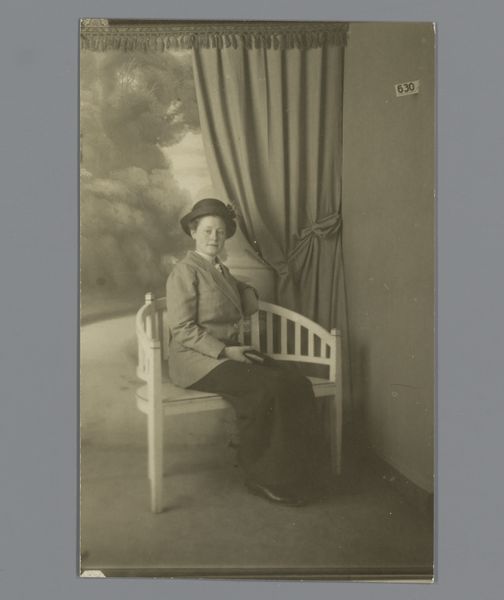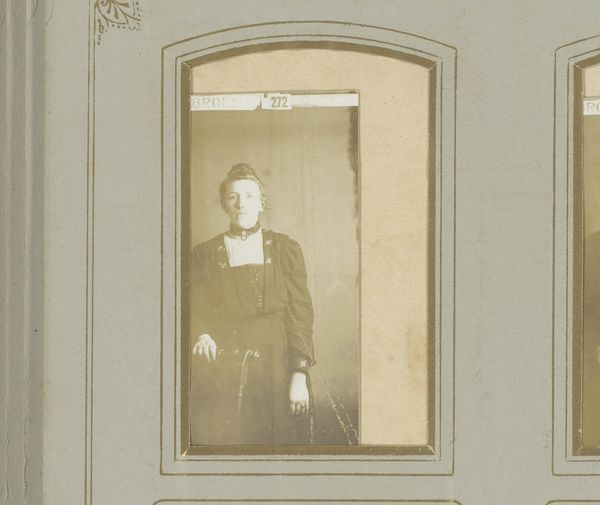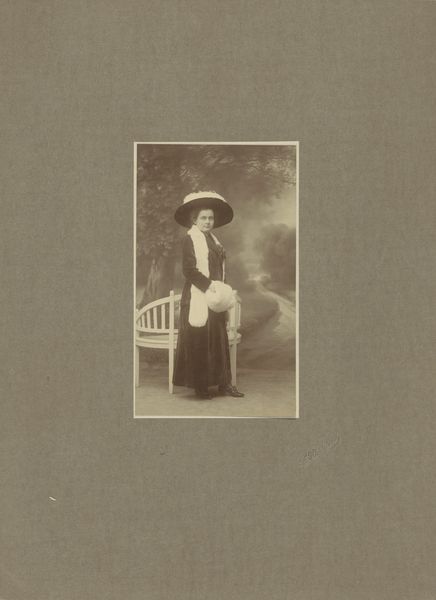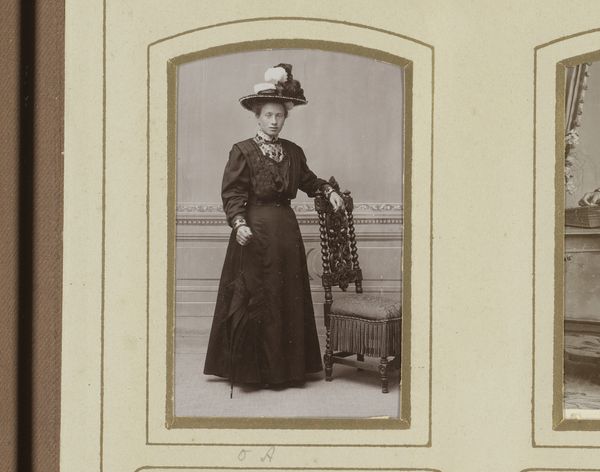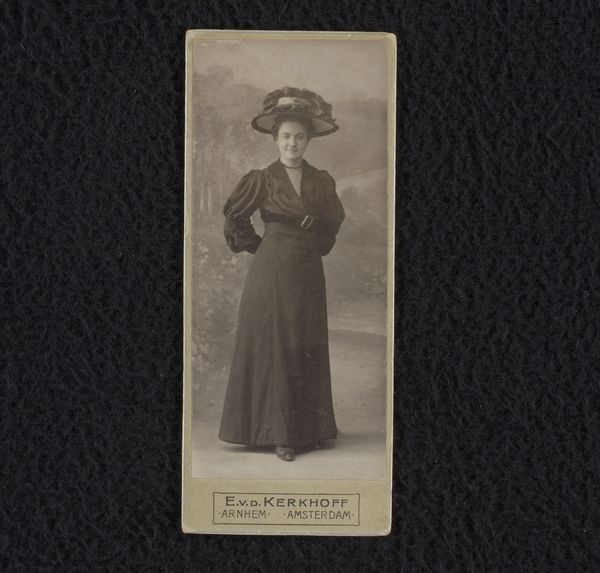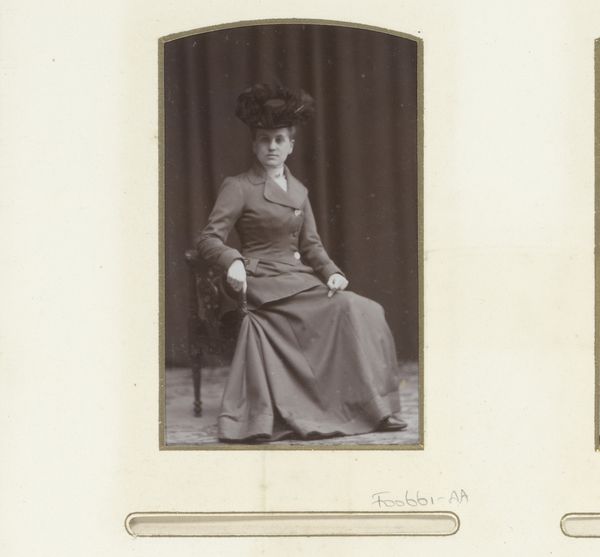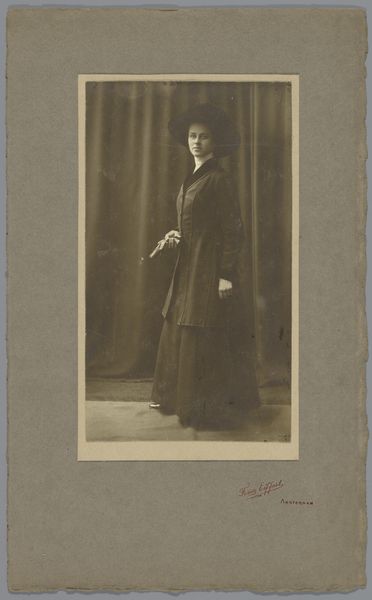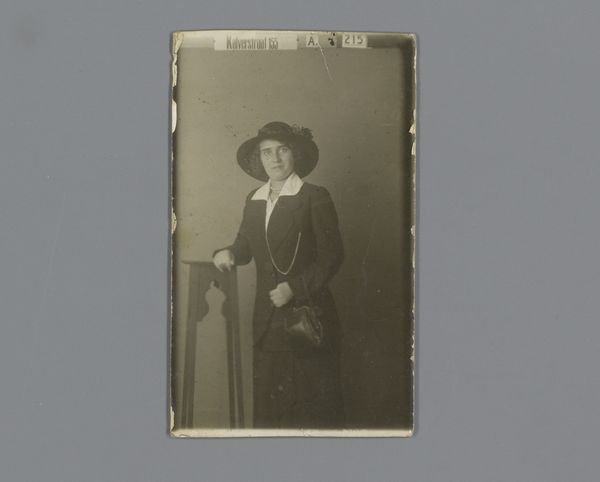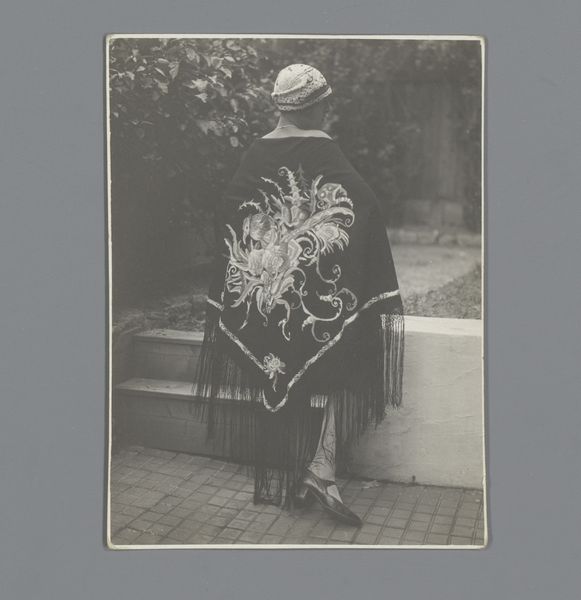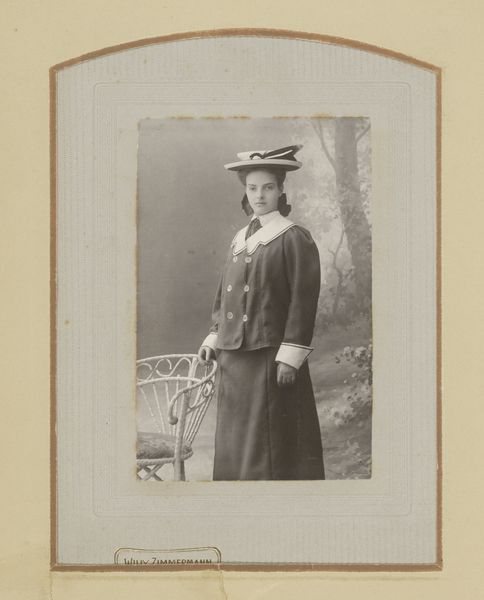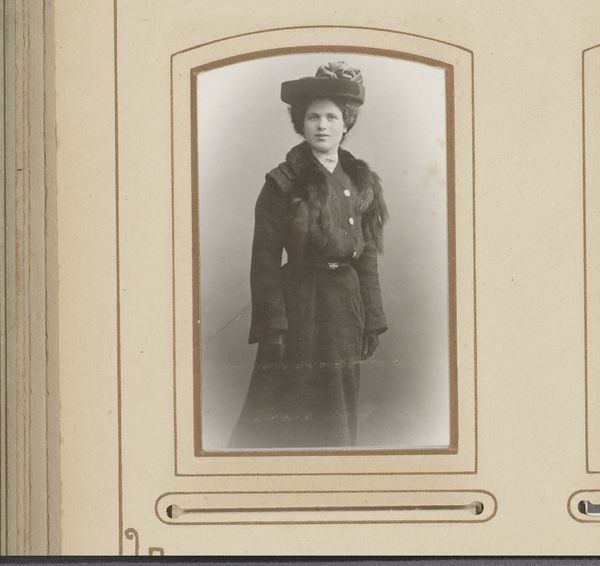
photography
#
photography
#
genre-painting
#
realism
Dimensions: height 132 mm, width 86 mm
Copyright: Rijks Museum: Open Domain
Editor: So, here we have an older photograph from before 1930, "Portret van een onbekende vrouw," from the Rijksmuseum. The description notes that the photographer is "American Automatic Fotografie." It is striking, very poised. What stands out to you? Curator: The formal pose and clothing read as indicators of class and perhaps a certain societal expectation for women. It asks us to think about how portraiture has historically been used to reinforce—or even challenge—ideas of identity and status. Look at the way the studio backdrop mimics an outdoor scene, almost suggesting a yearning for freedom. Does the sitter’s slightly melancholic expression support or undermine this notion? Editor: That's an interesting tension – the constructed backdrop versus the genuine expression. So, would you say this piece challenges the typical, more celebratory portrait? Curator: Exactly! This image prompts questions about the constraints placed on women of that era. The sitter's direct gaze, though reserved, doesn't necessarily offer submission. What stories might she tell us if she could step out of this photograph? Consider also that this comes from "American Automatic Fotografie". This was a business targeting the popular classes and subverting the elites-driven portraits. How does the business model inform how you think about this woman and her representation? Editor: That perspective completely changes how I see this photograph. The business context helps elevate this unknown woman. Thank you! Curator: It's through these layered interpretations—social context, artistic intent, subject agency—that we can start to unravel the complex narratives embedded within artworks, sparking meaningful dialogue.
Comments
No comments
Be the first to comment and join the conversation on the ultimate creative platform.
